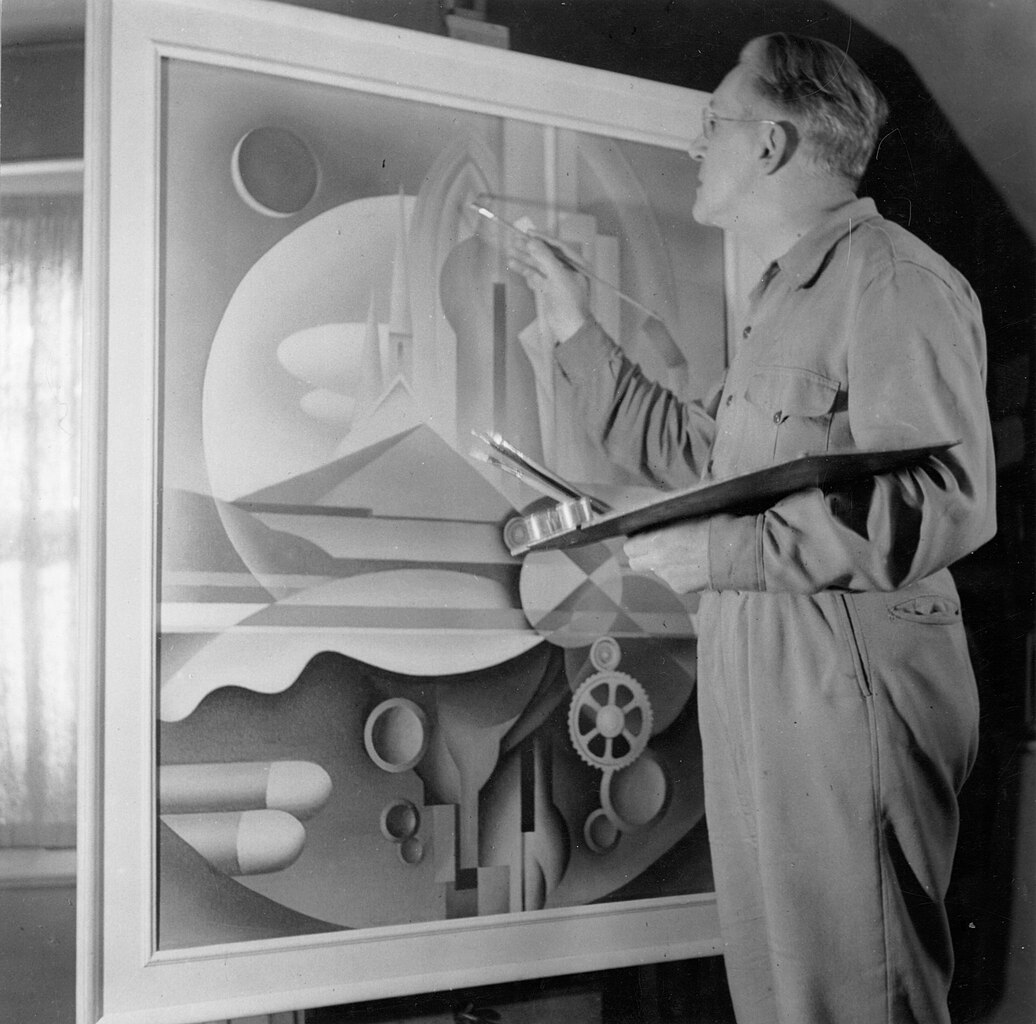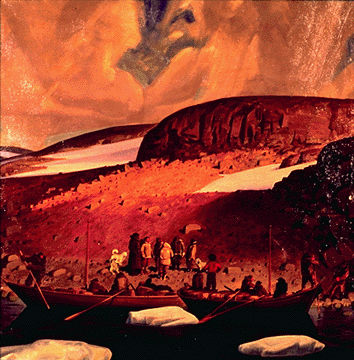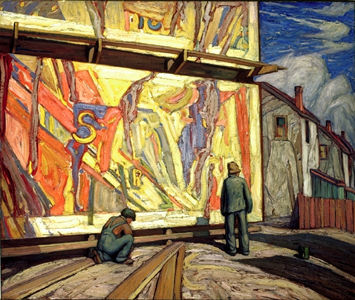Bertram Richard Brooker, artist, novelist, poet, journalist, advertising executive (born 31 March 1888 in Croydon, England; died 21 March 1955 in Toronto, ON). Brooker was one of Canada’s first abstract painters. He also won the first Governor General’s Award for fiction with Think of the Earth (1936).

Early Life
Bertram Richard Brooker was born in England to working-class parents. He left school at age 12 and began working to support his family. Despite his lack of formal education, Brooker was an avid reader. He also began painting as a child; his first work was a watercolour done in 1899. Brooker was also interested in music and became a choirboy at the local Anglican church when he was 12 years old.
Life in Canada
In 1905, Bertram Richard Brooker immigrated with his family to Portage la Prairie, Manitoba, where he and his father worked for the Grand Trunk Pacific Railway. He also attended night school. In his early 1920s, Brooker briefly visited England and New York City, where he was likely exposed to modern art and theatre.
In 1912–13, he and his brother Cecil operated the Roxy Theatre, a motion picture theatre in Neepawa, Manitoba. During this period, he also wrote film scripts about a detective named Lambert Chace, several of which were made into films.
Around this time, he married Mary Aurilla Porter, whom he had met in an Anglican choir in Portage. They would have three children together.
Brooker’s success writing scripts led him to journalism. He first edited the Neepawa Register and the Portage Review, and subsequently worked at major newspapers in Manitoba and Saskatchewan, including the Winnipeg Tribune, the Regina Leader-Post and the Manitoba Free Press.
Advertising Executive in Toronto
In 1921, Bertram Richard Brooker moved to Toronto, Ontario, to work for the Globe newspaper and Marketing magazine, the trade journal for the advertising industry. In 1924, he purchased the magazine and became its publisher and editor. In 1927, he sold the publication and began a career as an advertising executive. Over a career spanning more than 25 years, he worked with such companies as J.J. Gibbons and MacLaren Advertising Company, retiring as vice president of the latter in 1955.
Brooker was an active member of Toronto's cultural life, painting, writing both prose and poetry, and regularly reviewing contemporary art and literature. His home became a meeting place for creative individuals, including artists Charles Comfort, Paraskeva Clark, and Kathleen Munn, as well as conductor Ernest MacMillan. The Hart House String Quartet played at his home at least once. In 1923, Brooker became a member of the Toronto Mendelssohn Choir and the Arts and Letters Club of Toronto.
Art
As an artist, Bertram Richard Brooker worked in oil, watercolour, pencil, ink and print media and produced both abstracts and realistic works. Brooker believed that the artist had a responsibility to society, to help others get in touch with their spiritual values. Through his art, he attempted to express this spirituality. Brooker was inspired by a mystical experience he had in 1923, while visiting a Presbyterian church in Dwight in the township of Lake of Bays, Ontario (see Muskoka). Around this time, he also became associated with the members of the Group of Seven. He was most closely aligned with Lawren Harris, who was also interested in spiritual values.
In the early 1920s, Brooker began working on a series of abstract paintings, including Oozles and Noise of a Fish. In 1927, he became the first Canadian artist to exhibit abstracts, when a selection of his works was shown at the Arts and Letters Club. His work was also included in several Group of Seven exhibitions between 1928 and 1931. That year, he had a solo exhibit at Hart House that featured eight of his abstract paintings, including Sounds Assembling (1928) and Alleluiah (1929).
By this time, however, Brooker had met representational painter Lionel LeMoine Fitzgerald and was moving in another direction, combining representational and abstract modes. This approach can be seen in Manitoba Willows (ca. 1929-31) and Snow Fugue (1930).
Brooker was a founding member of the Canadian Group of Painters (established in 1933), which succeeded the Group of Seven.

Literature
Bertram Richard Brooker also dedicated his creative energies to literature. He initiated, introduced and edited The Yearbook of the Arts in Canada 1928-1929, and later published a second volume in 1936. That year, he won the first Governor General’s Award for fiction for his novel Think of the Earth (1936). He also published The Tangled Miracle, a Mystery (1936) under the pseudonym Huxley Herne. In 1949, he published a third novel, The Robber, under his own name. Brooker also wrote other unpublished novels, short stories and poems.

 Share on Facebook
Share on Facebook Share on X
Share on X Share by Email
Share by Email Share on Google Classroom
Share on Google Classroom








